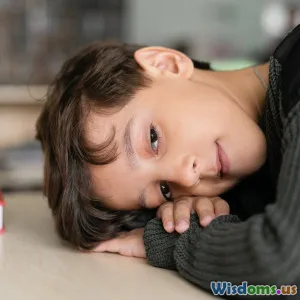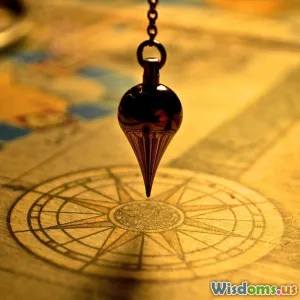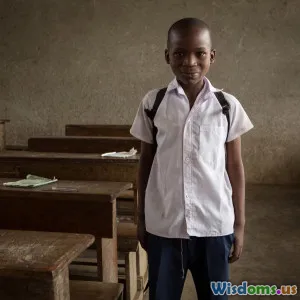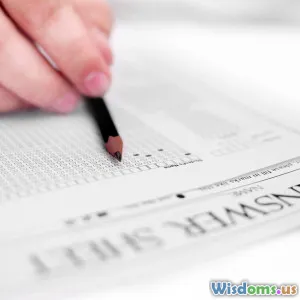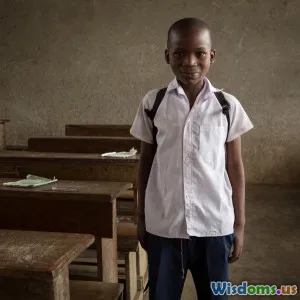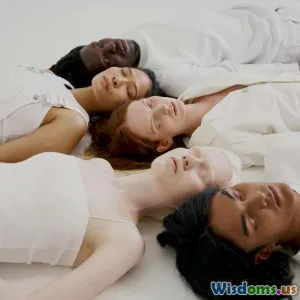
Celebrating Multicultural Literature
7 min read Explore the power of multicultural literature in enriching our understanding and celebrating diverse voices worldwide. (0 Reviews)
Celebrating Multicultural Literature: Embracing the Richness of Diverse Voices
Literature has long been a mirror reflecting human experience, a bridge spanning cultures, and a pathway to understanding the myriad narratives that shape our world. Yet, for a significant portion of history, mainstream literary canons have often been dominated by singular cultural perspectives. Celebrating multicultural literature is not merely an exploration of diverse stories but a vital movement toward inclusivity, empathy, and a more comprehensive representation of global voices.
Why Multicultural Literature Matters
Multicultural literature incorporates stories, themes, and voices from varied cultural backgrounds, ethnicities, and experiences. This body of work is more than a celebration of diversity; it functions as an educational tool and a catalyst for social change.
Promoting Empathy and Understanding
Engaging with multicultural literature allows readers to step into the lives of characters from vastly different walks of life. Research from the National Literacy Trust reveals that children exposed to diverse books demonstrate greater empathy and critical thinking skills. For instance, works like Chimamanda Ngozi Adichie's "Americanah" transport readers into the complexities of Nigerian identity intertwined with American society. Such narratives go beyond stereotypes explaining nuanced challenges and joys of living across cultures.
Challenging Prejudices and Stereotypes
Historically, literature often marginalized or stereotyped non-dominant cultures. The rise of multicultural literature actively disrupts these narratives. For example, Sherman Alexie's "The Absolutely True Diary of a Part-Time Indian" offers a vivid portrayal of Native American life that shatters common misconceptions with unfiltered honesty and humor.
Enriching the Literary Landscape
Incorporating diverse literary traditions enhances authenticity in storytelling and introduces new styles, metaphors, and narrative structures. The poetry of Warsan Shire, a Somali-British poet, blends cultural identity and immigrant experiences, influencing not only literature but also popular music and visual arts.
Historical Evolution and Milestones
The multicultural literature movement gained notable momentum from the mid-20th century onward, paralleling civil rights movements worldwide.
- 1960s-70s: This era saw authors from marginalized communities gaining platforms. Toni Morrison’s groundbreaking novels, beginning with "The Bluest Eye," foreground African American experiences with poetic intensity.
- 1980s-90s: Latinx and Asian American literature rose prominently, with Sandra Cisneros’ "The House on Mango Street" and Amy Tan’s "The Joy Luck Club" gaining widespread acclaim.
- 21st Century: Expansion of global voices in literature reflects increased cross-cultural connectivity. Authors like Marjane Satrapi with "Persepolis" and Han Kang with "The Vegetarian" highlight that diversity is now deeply embedded in mainstream publishing.
Notable Examples of Multicultural Literature
Children’s and Young Adult Literature
Starting diversity education early is crucial. Books like "Last Stop on Market Street" by Matt de la Peña introduce young readers to urban multicultural environments through vibrant storytelling and inclusive depictions.
Adult Fiction
Khaled Hosseini’s "The Kite Runner" and Jhumpa Lahiri’s "Interpreter of Maladies" offer deep insights into Afghan and Indian diasporic experiences, respectively. These titles not only achieved commercial success but also educated a global audience about complex cultural realities.
Non-Fiction and Memoirs
Madeleine Thien’s "Do Not Say We Have Nothing" blends historical trauma with cultural memory, showing the transformative power of literature beyond fiction. Memoirs like Michelle Zauner's "Crying in H Mart" expose readers to intimate struggles intersecting cultural identity and grief.
How to Incorporate Multicultural Literature in Daily Life
- Educational Libraries and Curriculums: Schools adopting inclusive reading lists enable students to encounter a broader spectrum of voices. Programs such as We Need Diverse Books champion equitable representation in education.
- Literary Festivals and Community Events: Events like Brooklyn Book Festival and Jaipur Literature Festival regularly spotlight multicultural authors, fostering community dialogue.
- Book Clubs and Discussions: Hosting or joining book clubs with a focus on multicultural literature sparks critical conversations about culture, bias, and identity.
Challenges Facing Multicultural Literature
Despite progress, barriers remain. Minority authors often face limited publishing opportunities or marketing support. According to the 2019 Diversity Baseline Survey by Lee & Low Books, authors of color comprised just 16% of publishing staff, highlighting structural inequalities.
However, digital self-publishing and social media have helped many authors find audiences, bypassing traditional gatekeepers. Initiatives like #OwnVoices encourage authors to tell their own stories, reclaiming narrative authority.
Conclusion: An Invitation to Celebrate and Engage
Celebrating multicultural literature is a proactive embrace of the complex, interwoven human experiences that make our world vibrant and enlightened. It enriches us individually by broadening perspectives and collectively by building bridges across cultural divides.
By reading, promoting, and supporting multicultural literature, we contribute to a literary culture that respects all voices and sustains the power of storytelling as a tool for unity, education, and activism.
Whether you’re a reader, educator, or writer—engage with multicultural literature intentionally. Explore new authors, support diverse publishing projects, and allow these stories to challenge and inspire your worldview.
The stories of many cultures are the stories of humanity. Celebrating them is not just inclusive—it’s essential.
References
- National Literacy Trust, "Diversity and Empathy in Children’s Literature" (2020)
- Lee & Low Books Diversity Baseline Survey (2019)
- Chimamanda Ngozi Adichie, "Americanah" (2013)
- Toni Morrison, "The Bluest Eye" (1970)
- Sandra Cisneros, "The House on Mango Street" (1984)
- Khaled Hosseini, "The Kite Runner" (2003)
- Michelle Zauner, "Crying in H Mart" (2021)
- We Need Diverse Books, Official Site
Rate the Post
User Reviews
Popular Posts
















